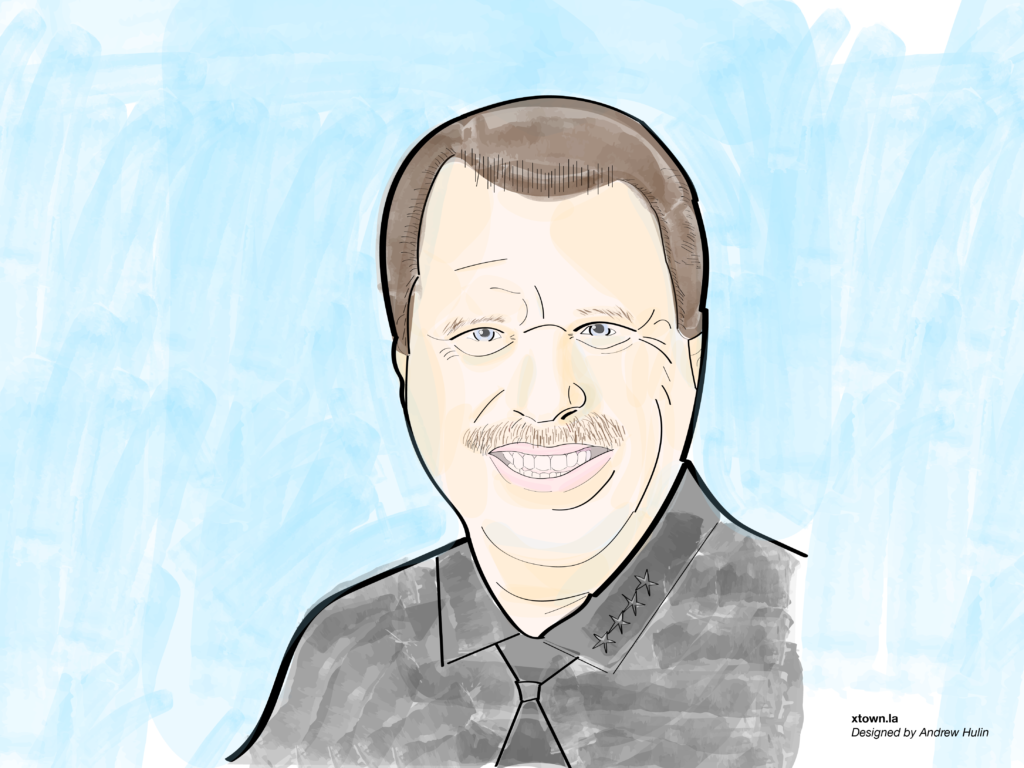Three questions for the Glendale Chief of Police

The County of Los Angeles has 46 different law enforcement agencies spread out over a county of about 10 million residents.
With 200,000 residents, the City of Glendale is located less than 10 miles north of Downtown LA in the San Fernando Valley. It is the fourth largest city in Los Angeles County.
We’re interested in how a city like Glendale fits into the law enforcement quilt of this diverse county.
Chief of Police Carl Povilaitis, a 29-year veteran of the Glendale Police Department, recently celebrated his first year as chief, commanding about 280 officers (compared to the LAPD’s 10,000). Crosstown’s Ethan Ward spoke with the chief to find out how data informs his decision making process, what surprised him most his first year on the job and what his goals are for the future.

CROSSTOWN: The LAPD has come under scrutiny for its use of predictive policing. What are your thoughts on predictive policing and using data when making decisions for the Glendale Police Department?
CHIEF POVILAITIS: I don’t have predictive policing software. I am a believer in using a data-driven approach to policing. An individual can be a crime spree. For example, if I break into one car a day every year and multiply that. The vast majority of the population are law abiding, but a very small percentage of the population are your chronic offenders. That very small population can create a larger percentage.
Put it this way, if you’re driving into Glendale and have the intent to commit a burglary, but see three police cars that have people stopped — that may have an impact on your thinking and driving. We use the data to determine where to put resources so we don’t have to take the crime report. The second part of that is if I can’t prevent it, can I catch them?
My number one complaint in this community is traffic-related and we use a data-driven approach to that. Speeding cars, modified exhaust, tinted windows, running stop signs, heavy traffic, crazy drivers.
I need to know what’s going up and what’s going down. But then the next question is, Why? What’s driving these numbers? Why is it going up why is it going down? And then the other question is, What do we do about it? What strategies do we put in place to address it?
This department is really steeped in the traditions of community policing. When we talk about community engagement and getting to know people, technology sometimes gets in the way of that. There have to be human beings involved and there can’t be any substitute for that.
CT: What’s been most surprising about your crime stats this year?
CP: We’ve watched some of our property crimes start to increase, but that’s also a function of trying to deal with the fact there are reduced consequences for those that are committing them.
With Proposition 47, it increased the value required to make it a felony. It was $400 for as long as I can remember, and it raised it to $950. It reduced the consequences for serial shoplifting because until a correction was made more recently, Prop 47 eliminated petty theft with a prior, [a more serious offense for someone who had previously been caught stealing and also had committed a violent crime]. So, your professional shoplifter could go to store after store, and as long as they kept it under $950 they were being hit with misdemeanors.
CT: What are your goals for the department?
CP: Like everywhere else in LA, we have a very diverse population. We’re ethnically diverse, religiously diverse. You name the category, it’s diverse. And so we pay attention to those issues, but we pride ourselves on the never-ending job of making sure we have strong relationships with all the communities that represent that, and we try to address those concerns quickly and be on top of them. Right now our hate crimes are actually down. I haven’t had one this year.
Community engagement is high on our priority list because in order to be a safe city, it’s truly a partnership between the community and the police department. The police are the community and the community are the police. We mean it here in Glendale. They’re very much integrated with each other.






